In this series of blogs the curators of our current exhibition – Treason: People, Power & Plot – explore how the 1352 definition of high treason, as ‘compassing or imagining’ the death of the king, his queen, or their eldest son, has been interpreted over the last 700 years. Part one explored the origins of this form of treason, and what happened when people were accused of speaking treasonous words.
In this second instalment we’ll be looking into instances of treasonous magic, and what it meant to ‘imagine’ the death of a rival in times of civil war.
Treasonous magic
The fifteenth century would see new precedents and constructions in the form of treasonous magic falling under the ‘compassing and imagining’ clause, particularly during the reign of Henry VI.
Magic (to the medieval mind at least) could be used to produce real-world effects – whether using the arts of necromancy to produce a powerful poison, or attempts to use magic to bring about injury to the king’s physical person – actual plots against the king which differed little from a non-magical plot. Magic in such cases was equivalent to a sword, or any other weapon, and would have fallen as such under the 1352 definition of treason. Other uses of magic, however, required judicial construction before they could be deemed as treasonous.
In June 1441, while out dining at the King’s Head in Cheapside, Eleanor Cobham learned that three of her associates and servants had been accused of conspiring to bring about Henry VI’s death by means of necromancy and sorcery. Eleanor was the second wife of the king’s uncle, Humphrey, Duke of Gloucester, heir apparent to the throne of England should the king die without an heir, and as such would have become queen should Henry suffer an untimely death.
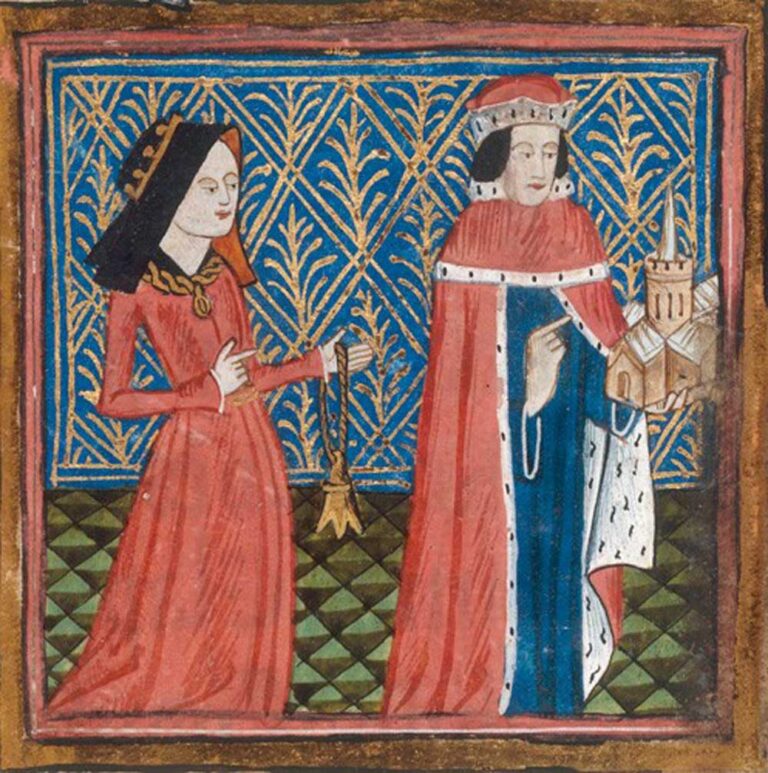
Eleanor’s associates, Roger Bolingbroke, Thomas Southwell and John Home, were alleged to have invoked demons and malign spirits of the air and the earth, with Eleanor’s encouragement, and created and used magical implements to find out when the king would die (and Eleanor would become queen).
There was no accusation of an actual plot against Henry’s life, no poison or assassination attempt, or even an attempt to bring about the king’s death, merely a horoscope made without the king’s permission. How then to prosecute their actions as treasonous?

The three men, using necromancy and astrology, had successfully predicted that the cause of the king’s death would be ‘melancholy’, and predicted that the king’s death would occur in late May or early June 1441 (see footnote 1). Upon discovering this information the group circulated their news as rumours among members of the court.
This last charge was crucial in prosecuting the men for ‘compassing and imagining’. By gaining illicit knowledge of the king’s demise and spreading such news, the people of the realm would (the construction ran) withdraw their cordial love from the king, who would be saddened as a consequence, and his life would be thereby shortened. This then was treason.

Eleanor was saved from a secular trial on the treason charges – because the authorities had no readily available precedent for placing a noble woman on trial for treason – and was instead tried primarily by a religious tribunal for the spiritual and heretical aspects of the case (see footnote 2).
She was made to perform walks of penitence through the streets of London in punishment, and her marriage was annulled on the basis that she had allegedly seduced her husband with magic. She was sentenced to life imprisonment, but her life was spared.
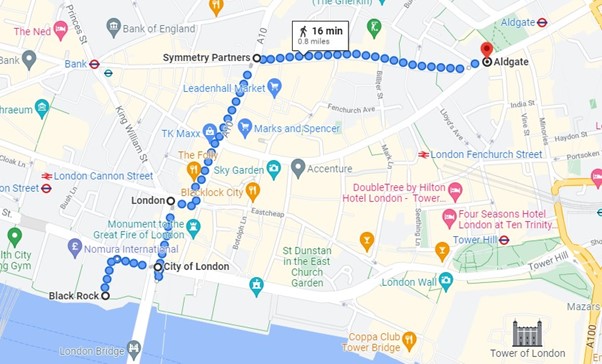
The three men, however, felt the full power of the courts. While Home was able to produce a pardon for his actions (which appear to have been more limited than the other two men), Southwell and Bolingbroke were condemned to the full traitor’s death. Southwell died in the Tower of London before he could be executed (possibly committing suicide to avoid the horror that awaited him). Bolingbroke was drawn, hanged and quartered, claiming his innocence until the end.
Usurping the throne
‘Richard, late duke of Gloucester, calling and naming himself, by usurpation, King Richard III … on 21 August in the first year of the reign of our said sovereign lord [1485], gathered a great host at Leicester in the county of Leicester, traitorously intending, imagining and conspiring the destruction of the royal person of the king, our sovereign liege lord’.
By the time of the Wars of the Roses, charges of ‘compassing and imagining’ for attempts to cause the people to withdraw their love from the crown were well established, whether through the posting of seditious bills, the speaking of treasonous words and rumours, the application of the dark arts of necromancy and magic – or a combination of these. With the outbreak of civil war, however, ‘compassing and imagining’ hinged on the ebb and flow of conflict, as rivals fought over the throne.
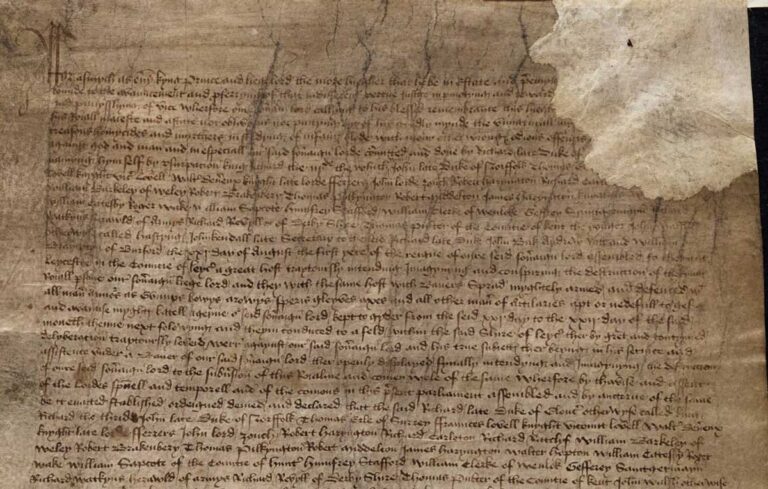
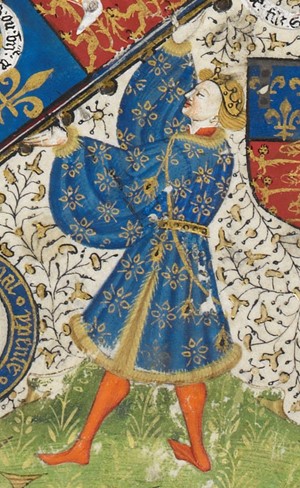
Many of the charges brought against traitors in the fifteenth century were pursued by means of ‘attainder’, a process by which they were declared guilty by Act of Parliament, condemned as legally dead without recourse to a trial at common law, their bloodline tainted unless the attainder was overturned.
Control of Parliament was all that was needed to secure condemnation, and the charges brought against those attainted were often wide-ranging, utilising the full range of the language of treason to tarnish the traitors as wicked, murderous and evil. As such, ‘compassing and imagining’ (and other similar words) became a common charge in bills of attainder alongside the more obvious charges of levying war which accompanied the battles and skirmishes of the conflict.
In times of dynastic crisis, however, the concept of ‘compassing and imagining’ the death of the king became more complicated. In October 1460, as part of a settlement between the Yorkist and Lancastrian factions following a tumultuous year of attainders and conflict, Richard, Duke of York was recognised in Parliament as the heir to Henry VI after the king’s death (having made his own claim to the throne as the rightful king), with Henry’s son set aside in the immediate line of succession. In consequence of this, an addition was required to the terms of the original 1352 Treason Act and Parliament passed a new act stating that:
‘if any person or persons imagine or compass the death of the said duke and thereof provably be attainted of open deed done by folks of their condition, that it be deemed and adjudged high treason’.
Catalogue ref: C 65/105, m. 4 (see footnote 3)
Henry VI was, however, to remain king for the rest of his life, leading to a situation where it was now high treason to compass or imagine the death of the leading figureheads on either side of the conflict.
The settlement would not last long. Shortly after the agreement of the accord, York was killed in battle against Lancastrian forces at Wakefield, his son seizing the throne as Edward IV a few months later. Specific charges of ‘compassing and imagining’ the duke’s death were brought against those who had been involved in the battle itself – Henry, Duke of Somerset, and the leading nobles in his force who had been present at Wakefield – but not against Henry VI himself.
While the new king claimed in his first parliament in November 1461 that Henry had ‘procured, stirred and excited’ York’s murder (and the deposed king was indeed attainted on various items of treason), the charges against him were limited to actions which had taken place after the alleged Lancastrian breaking of the accord (through York’s death). This meant that they were taking place in a context when Edward could be seen as a legitimate contender for the crown (see footnote 4).
The accord had acknowledged the Yorkist right to the throne in Parliament, and by breaking the accord (so the Yorkist line ran) Henry had forfeited his right to the throne in favour of the Yorkist line. Then, and only then, could he technically have been charged with ‘compassing and imagining’ Edward’s death.

Backdating a reign
A considerably more outrageous example of the threat of ‘imagination’ at a time of civil war are the charges brought in the attainder of Richard III in 1485, a posthumous attainder in the wake of his defeat and death at the Battle of Bosworth. In the act of attainder brought by the new king, Henry VII, it was claimed that Richard and his forces had been at Bosworth ‘intending, imagining and conspiring the destruction of the king’, before going on to levy war against him.
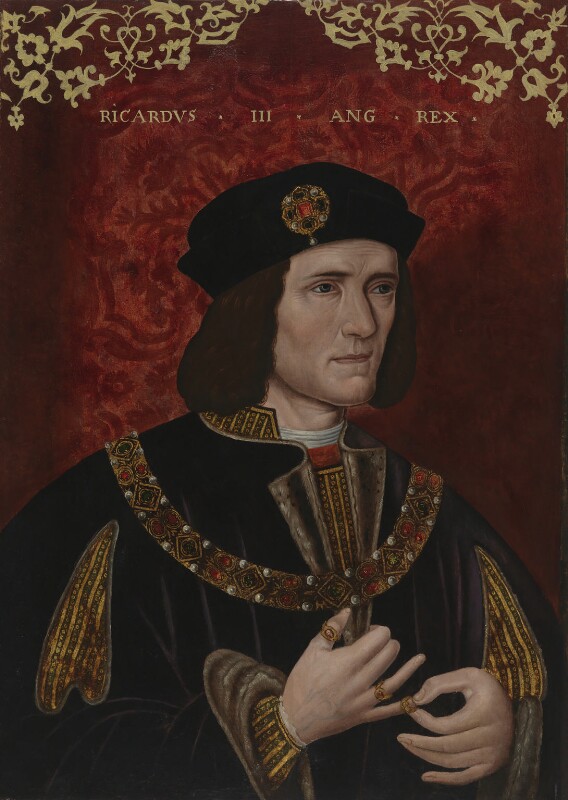
In fact, it was Henry who had committed exactly these treasons at Bosworth, requiring the new king to backdate the start of his reign to the day before the battle. Unlike Edward IV’s usurpation of the throne, which could fall back on the 1460 accord for justification (despite the dubious circumstances in which the accord had been secured), Henry Tudor was an attainted traitor at the time of the battle, fighting against the de facto king, and the decision to backdate his reign in order to charge Richard with treason ‘sore was questioned with’ in Parliament.
This was a largely political positioning, to consolidate and secure his legal position and re-define the king’s relationship with those who had served in Richard’s ranks, offering a route back to favour on the new king’s terms, with this treasonous threat hanging over them if their future behaviour did not conform. It was also dangerous, as it meant that any future usurper could claim the same precedent against Henry himself and could frame him as the traitor once again.
An acknowledgement of this would come in 1495, when new legislation – ‘An act that no person going with the king to the wars shall be attainted of treason’ – was passed stating that those supporting the de facto king in battle could not be charged with treason after the fact. The act was not, however, retrospective. Richard III would remain a traitor.
Treason expanding
Throughout the first two centuries after the 1352 Treason Act defined treason for the first time, the range of actions which might constitute ‘compassing’ and ‘imagining’ had expanded from mere plots against the monarch’s life to a broader understanding and language of treason. They would expand further under the Tudor regime and into the Early Modern period, as the ‘compassing and imagining’ clause grew yet further in its interpretation. In the next of this series of blogs, we’ll be looking into ‘compassing and imagining’ in the Early Modern period.
You can find out more about the stories touched on in this blog in our exhibition Treason: People, Power & Plot, which runs until 6 April 2023, where you can view the following documents and many more:
- The 1352 Treason Act
- The indictment against Eleanor Cobham and her associates
- Richard III’s attainder
You can also read more in our book, A History of Treason, available to purchase now from our online shop and all good booksellers.
Footnotes
- Henry VI would die in late May, but 30 years later, on 23 May 1471, allegedly of ‘pure displeasure and melancholy’, but more likely murdered. Perhaps the magical nativity was correct, but just a few decades out.
- A previous ‘royal witch’ Queen Joan of Navarre had been accused of treasonous witchcraft against her step-son Henry V in 1419 and imprisoned, but no trial or real investigation were ever pursued.
- Published in ‘Henry VI: October 1460’, in Parliament Rolls of Medieval England: British History Online http://www.british-history.ac.uk/no-series/parliament-rolls-medieval/october-1460. Unlike the 1352 act, the legislation for compassing and imagining the death of Richard, Duke of York specifically required an overt act.
- C 65/106, m. 11, published in ‘Edward IV: November 1461′, in Parliament Rolls of Medieval England: British History Online http://www.british-history.ac.uk/no-series/parliament-rolls-medieval/november-1461.
Fascinating historical comment on those times.
new legislation – ‘An act that no person going with the king to the wars shall be attainted of treason’ – was passed stating that those supporting the de facto king in battle could be charged with treason after the fact.
Was ‘not’ omitted in this sentence: those supporting the de factor king in battle could NOT be charged?
Thanks for spotting this. We’ve edited the text accordingly.
Eleanor Cobham was spared but another woman, Jenningham, from whom she had purchased herbs and potions that she said were to help her husband produce a child, was burnt at the stake. It was claimed that Eleanor intended to use them to poison the King.
Yes, Henry Vii was definitely a traitor as well as a usurper and backdated his reign for the purpose of legitimacy.